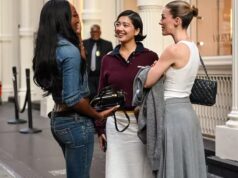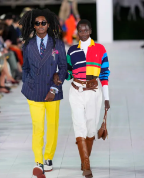At the time, I owned two suits, one from Ann Taylor, the other a department store brand. Because of their fit (loose not tailored) and the color of one of them (beige), I always found myself adjusting the drape of the jackets or brushing off dark pieces of fuzz, which the beige suit attracted like a magnet. All of this fiddling made me feel self-conscious rather than self-assured. This new suit was different. I bought it in Harvard Square from a small clothing boutique whose name now escapes me, but which had intrigued me from the minute I started law school. With its window displays of beret-capped mannequins dressed in sleek black pants, herringbone blazers, and sharply cut suits, it could have been tucked away on a cobblestone street in Paris. There was a certain assurance and aloofness to the outfits that inspired both curiosity and confidence. Adding to the allure of the merchandise was the saleslady I saw inside, an elegantly tall and slender Black woman who was always immaculately dressed each time I walked by.
Wearing a Suit Made Me Feel Like a Lawyer—Then the Dress Codes Changed
I have thought about a lot of things this past year. Will we be okay? When will this end? What will the new normal look like? In addition, I also found myself thinking about more frivolous things, like what does dressing for work mean in the age of Zoom, and is it the same for everyone? I blame my fascination with this question on a simple encounter back in 1998, when I was interviewing for a law firm summer internship.
I had to build up my confidence to walk into that store. My student budget was no match for the price tags in the window, and, besides the elegant saleswoman, I had never seen another person of color shopping its aisles. If you are a person of color, this is something you consider. I did my best to counter any potential surveillance by dressing the part of Harvard student—backpack, jeans, cap with school logo, nondescript long-sleeve T-shirt.









